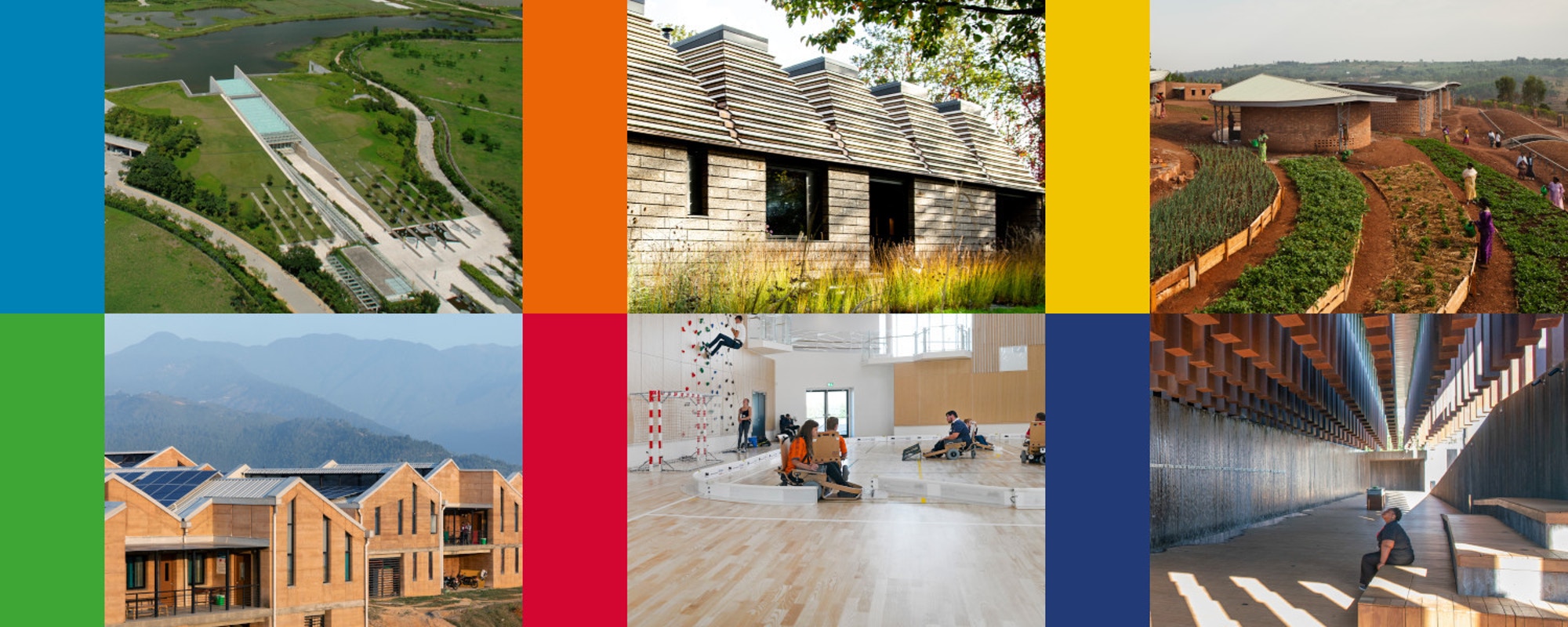– June 28, 2022: Deadline for abstract submissions
– October 12, 2022: Deadline for Full Paper submission including 250 word abstract
– December 19, 2022: Authors receive feedback
– January 15, 2023: Deadline for authors to submit revised papers if asked to do so by peer reviewers
– Primo February, 2023: Final feedback to authors of revised papers
– July 2 – 6, 2023: Presentation of Paper at the UIA World Congress of Architects in Copenhagen
VISION
Architecture and our built environments have extensive and complex impact on human and non-human wellbeing. To fulfill the SDG vision to ‘leave no one behind’, the UIA2023CPH asks how architecture can activate its profound agency in shaping our societies and its potentials for a sustainable, equitable and inclusive future for all. We ask how critically engaged design, policy making and a comprehensive understanding of the SDGs can challenge the way architecture conceives, forms and changes the social-environmental balances we live in.
With this call for papers the UIA2023CPH Science Track aims to bring together knowledge across research, practice and education to provoke new perspectives, new alliances and concrete action. The call invites new research and knowledge, that critically explore the diverse ways in which architecture and the built environment connect to the SDGs and their targets. The call encourages submissions from academics, independent scholars, civil society organisations, practitioners and policy makers.
To encourage exchanges and learnings across different knowledge and practice silos, we welcome submissions in diverse formats and across disciplines. Together, we want to identify the most pertinent questions, practices, methods and modes of research and development that can inform the urgently needed transformation of our societies and enable a sustainable, equitable and inclusive future for all.

17 SDGS IN SIX PANELS
The UIA2023CPH Scientific Committee has articulated the call across 6 panels that frame the interconnectedness of the 17 SDGs and identify key themes.
Paper submissions address one of the six panels. Read more about the six panels, and their corresponding sub-questions, by following the links below.
Panel 1
Design for Climate Adaptation
Architecture faces a grave challenge in a world struck by climate change. The built environment must adapt to changing weather patterns, higher temperatures and flooding.
Panel 2
Design for Rethinking Resources
Resources are getting scarcer, and architects need to address this issue. By using novel materials and recycling on a much greater scale, architecture can change its approach to resources.
Panel 3
Design for Resilient Communities
Communities are people, and people create communities. Architects can positively impact the lives of millions, even billions, by building for the future, and creating communities that last.
Panel 4
Design for Health
Healthy living takes place in healthy environments, and architects can help improve public health through careful planning, building and consideration.
Panel 5
Design for Inclusivity
A sustainable world is one with room and consideration for all people. Architects must design with inclusivity in mind, and take care to understand the needs of the many different people that inhabit the globe.
Panel 6
Design for Partnerships of Change
Architects must foster partnerships, and work across many different professions and skills to create a sustainable and inclusive future.
SUBMISSION INFORMATION
General information
Papers should be written in English and be submitted with a maximum 250 word abstract.
We kindly ask that submitted papers are not under review for another conference or journal and have not previously been published or presented in public except to a regional audience.
All accepted papers will be published in the proceedings series published by Springer
Paper Presentations
The Science Committee encourages that papers are presented in person at the World Congress in Copenhagen. We expect to be able to offer the possibility of online presentation of papers. The final decision regarding online presentations will be communicated on the UIA World Congress of Architects CPH 2023 website.
The programme for paper presentations will be developed during Spring 2023 with allocation of precise dates and time slots for presenters.
Selection Process
Paper Submissions will be double-blind reviewed by an international peer-review board, and must be fully anonymised when submitted. The peer-review board reflects the breadth of the research and practices invited, and the breadth of the formats invited.
Copyrights and 3rd party materials
Authors accepted to present will be required to complete a copyright transfer form and agree to present the paper at the UIA World Congress of Architects CPH 2023. Authors who present are also required to have their paper included in the proceedings published by Springer.
Authors must be able to present documentation of permission to use any 3rd party materials included in their paper upon request.
It is the policy of theWorld Congress that accepted authors pay full congress registration for the congress. The Science Committee reserves the right to withhold a paper from the programme if the author fails to comply with policies and guidelines, including deadlines and requests for submission of materials.
Images
Authors submitting papers that contain images must be able to provide the images in high-res quality upon request for publishing purposes. It is the submitting author’s responsibility to secure permission of use and publication of included images. Authors must be able to provide the Science Committee and Springer with documentation of permission from the rights holders.
SUBMISSION FORMATS
Diverse experiences and knowledge are essential to articulate the particular agency of architecture to contribute to achieving all 17 SDGs. To expand the possibility of transdisciplinary knowledge exchange and include voices that are not commonly part of academic and professional discourse, we invite submissions in several formats.
All papers are subject to peer review.
Research Paper
A Research Paper presents research and follows the IMRaD structure.
Research Paper submissions can include:
– Case studies, which could be comparative studies, design as a product, context studies, and more
– Methodologies
– Design as Scholarship where the process of design is the research method
Word count (including references in accordance with Style Guide) and images:
Full paper: 4000-6000 words (oral presentation)
Work in Progress paper (Short paper): 2000 words (oral or poster presentation)
Visual Essay
A Visual Essay is a research presentation where images contribute with knowledge, analyses and conclusions which cannot be expressed with words.
The Visual Essay can be an entirely visual piece or it can include writing, such as an introductory text.
Visual Essay submissions can use deep captioning where appropriate.
A Visual Essay is not a research paper with images serving only as example, illustration or additional documentation..
Visual Essay submissions can include:
– Design as methodology for architectural scholarship
– Design as scholarship, where the process of design is the research method
– Artistic processes
Word count (including references, in accordance with Style Guide):
Long paper: 30 images and 3000 words, including deep captioning (oral presentation)
Short paper: 15-20 images and 1200 – 1500 words, including deep captioning (oral or poster presentation)
Narrative Essay
A Narrative Essay allows other voices and knowledge than what are normally included in architectural academic research and congress presentations to contribute with relevant experiences, considerations, etc. A Narrative Essay must be contextualised by a relevant problematisation in regards of which it can drive a point/ challenge/ inform.
Narrative Essay submissions can include:
– Oral History. Transcribed interviews collecting memories and personal commentaries of historical significance as told by individuals https://www.oralhistory.org/about/do-oral-history/
– Storytelling. Experimental or narrative pieces that can critically inform or contextualise architectural practices. This could include subjective experiences that convey an event, relation, situation, place, or phenomenon that produces knowledge or unveils perspectives relevant on broader scales.
– Dialogue format. A practice or a piece of work in another type of practice than architectural, i.e. film, literature, etc is discussed by the creator and the paper author in context of architectural practices and the 17 SDGs, revealing new critical perspectives.
Word count (including references in accordance with Style Guide):
4000 words and 2 images (oral presentation)
Argumentative Essay
An Argumentative Essay contributes with provocative critiques, ideas, considerations that inspire/ challenge/ inform new analytical angles, connectivities, blind spots, etc. based upon substantial research references and well developed and reasoned arguments.
Argumentative Essay submissions can include:
– Position paper
– Provocation
– Critical commentary
Word count (including references in accordance with Style Guide):
4000 words and 2 images (oral presentation)

